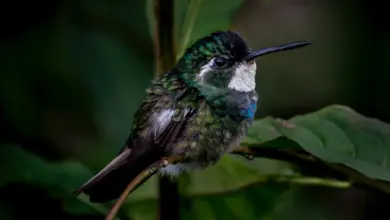House Martin (Delichon urbica)
The House Martin (Delichon urbica) is a migratory passerine of the family Hirundinidae.
The European range of the House Martin roughly corresponds with that of its relative the Barn Swallow, and it also winters in tropical Africa. The first Martins arrive in Europe a few days after the Swallows, but it is often late in April before distribution is general.
Though it travels with the swallow both in spring and autumn, its haunts differ slightly; it is more a bird of the dwelling house than the outbuilding.
By the end of October, most Martins have gone, though belated birds in November and December are not uncommon.
Description:
The adult House Martin is steel-blue above with a white rump, and white underparts; even its short legs and toes have white downy feathering. Its bill is black. The young bird is sooty black, and some of the coverts and quills have white tips and edgings.
The white rump of the House Martin, very noticeable in flight, should prevent confusion with either the Swallow or Sand Martin.
Song / Vocalization:
During the whole of its stay it constantly utters its chirrupy song, a sibilant twitter with a sound of “z” in it.
Diet / Feeding:
Its food, and many of its habits, except those connected with nesting, are similar to those of the swallow; it alights more frequently, and, often aiding progression with uplifted wings, will walk a few steps when collecting mud or feeding.
Breeding / Nesting:
Undoubtedly the House Martin, before it found man providing shelter in the shape of overhanging eaves, was a cliff and cave dweller. Some colonies of cliff nesting martins still exist. Even on a bare cliff face the bird usually builds below an overhanging rock, and on houses the nests are close under the eaves so that they may be strengthened by attachment above.
The house martin likes to return to its old haunts, repairing the nest it built the year before, or making a new one close to the one in which it was reared.
The nest is a cup fixed below a suitable ledge. The entrance is so small that the interfering House Sparrow cannot invade once the nest is complete. The mud, added in successive layers, is collected from ponds, streams or puddles. Both birds work at construction.
During construction there are frequent quarrels with trespassing sparrows, but if the sparrow remains in possession of a nest the martins build elsewhere.
At all times the martin is sociable, and many nests are built actually in contact; 4 or 5 white eggs are laid as a rule in early June; second and third broods are common, and late nestlings are often left to starve.
For weeks after leaving the nest the young congregate in ever increasing flocks which, as the season advances, may be seen gathering in trees or on housetops or on the wires with Swallows.



